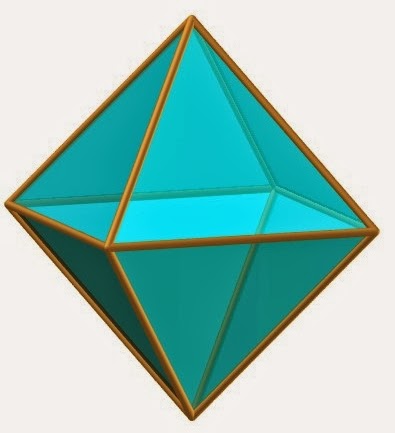So, we're going to begin with the construction of a geodesic dome. For that, you have to know and understand the three parameters of a geodesic dome. This parameters were discovered by Richard Buckminster Fuller during his experiences in 1948-1949. He also showed that geodesic domes are ideal for gorgeous architectures.
For example, in a tetrahedron N is equal to three, in an octahedron to four and in an icosahedron to five.
 |
| Tetrahedron (N = 3) |
 |
| Octahedron (N = 4) |
 |
| Icosahedron (N = 5) |
A step in the construction of a geodesic dome consists of the separation of each side of a triangle in equal segments. If we take the triangle with a vertex at the top, we rely it with a point of the opposite side which have a equal segments on its left and b equal segments on its right. b is greater or equal to 0. a
is greater than 0 and greater or equal to b.
a and b are the two other parameters of a geodesic dome and a+b is called frequency.
Example : a = 3 and b = 2
Note :
Note :
- When b = 0, the geodesic dome belongs to class I and is called "triacon".
- When a = b, the geodesic dome belongs to class II and is called "alternate".
- The other cases belongs to class III.

No comments:
Post a Comment